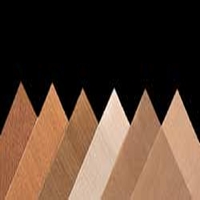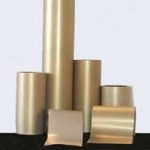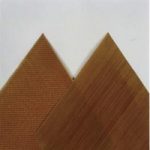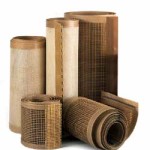Description
DuraFab® Mechanical Fabric (22 Series)
The DuraFab® Mechanical Series features a more textured surface, and provides the most cost effective solution for mechanical applications. These fabrics are manufactured from woven fiberglass substrates and have a moderate PTFE (Fluon®) content. These Cor less critical applications. The non-porous Mechanical Fabrics are ideal for applications where a mechanical impression must be transferred to a seal or a surface texture is required. | ||||||||||||||||||||||||||||||||||||||||||||||||||||||||||
DuraFab® PTFE Coated Fabric Characteristics | ||||||||||||||||||||||||||||||||||||||||||||||||||||||||||
DuraFab® Fabrics are engineered to retain the distinctive properties of PTFE; however, by adding a glass fabric to the matrix, AFC is able to obtain the added benefits of dimensional stability, durability, excellent tensile strength and extremely low elongation (<1%). DuraFab® Fabrics have received USDA approval for food processing and handling, and are FDA compliant (21 CFR177.1550). In addition, the DuraFab® fabrics can operate in temperatures from -400°F (-240°C) under static conditions and -100°F (-73°C) under dynamic conditions up to 550°F (288°C). | ||||||||||||||||||||||||||||||||||||||||||||||||||||||||||
Typical Applications | ||||||||||||||||||||||||||||||||||||||||||||||||||||||||||
Packaging: Food Products: Printing and Textiles: Polymer Processing: | Building Products: Chemical Processing: Other Applications: Additional applications exist. Contact AFC for more specific information.
| |||||||||||||||||||||||||||||||||||||||||||||||||||||||||
Styles Available | ||||||||||||||||||||||||||||||||||||||||||||||||||||||||||
| ||||||||||||||||||||||||||||||||||||||||||||||||||||||||||
Please note: Additional thickness and styles available upon special order and lead times may vary for different styles and widths. *Disclaimer: All figures provided in the above table are based upon ASTM D 4969-97, the Standard Specification for Polytetrafluoroethylene (PTFE) Coated Glass Fabric. The above tensile values are based upon the ASTM D828 test method and are not actual values of AFC’s materials. The above tensile values are 80% of the figures provided in Table 6 of specification D579. AFC states that its actual tensile will be greater than the above material specification and that actual tensile values will be provided upon request. Edge Tear values are based upon ASTM D1424 (Elmendorf Tearing Test) and are average values that can vary. | ||||||||||||||||||||||||||||||||||||||||||||||||||||||||||





